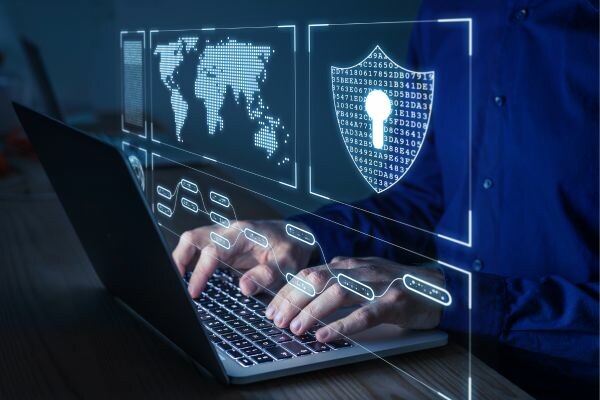Strengthening the Fortress: Cybersecurity Best Practices for IT Professionals
In today's fast-paced digital era, cybersecurity emerges as a top concern for individuals and organizations alike. With the evolving landscape of cyber threats, including malware, phishing attacks, data breaches and ransomware incidents on the rise, the role of IT professionals in protecting assets has never been more critical. This blog post will explore essential cybersecurity best practices that IT professionals should adopt to mitigate risks and ensure the resilience of their systems.
- Stay Informed and Updated: Cyber threats are dynamic, underscoring the importance for IT professionals to remain abreast of the latest trends, vulnerabilities, and security protocols. Stay connected with reliable cybersecurity news sources, participate in security mailing lists, and engage in discussions on pertinent forums. Additionally, ensure the prompt application of the latest security patches and fixes to all systems and software, addressing any known vulnerabilities proactively.
- Implement Robust Authentication Mechanisms: Building a strong defense against unauthorized access begins with robust authentication mechanisms. Integrate multi-factor authentication (MFA) whenever possible, requiring users to provide multiple forms of verification, including passwords, biometrics, or security tokens, before accessing sensitive systems or data. This approach significantly diminishes the risk of unauthorized access, even in the event of compromised credentials.
- Enforce Strict Access Controls: Limit access privileges exclusively to individuals requiring them for their designated responsibilities. Enforce the principle of least privilege (PoLP), granting users the minimum access necessary to fulfill their roles. Regularly review and update access permissions in alignment with personnel changes or shifts in job responsibilities, mitigating the risk of unauthorized access and minimizing the attack surface.
- Secure Network Infrastructure: Utilize firewalls, intrusion detection and prevention systems (IDPS), and virtual private networks (VPNs) to establish secure perimeters and monitor network traffic for anomalies. Integrate robust encryption protocols, such as Transport Layer Security (TLS), to protect data during transit, mitigating the risk of eavesdropping or tampering.
- Regularly Backup Data: Data backups function as a final safeguard against data loss caused by cyberattacks, system failures, or human error. Deploy automated backup solutions to consistently and securely back up critical data to off-site or cloud-based storage repositories. It is essential to rigorously test backup and recovery procedures to ensure their effectiveness and reliability in the event of any incidents.
- Educate and Train Users: Human error stands out as a prominent factor in cybersecurity incidents, underscoring the significance of user education and training. Conduct periodic cybersecurity awareness training sessions to instruct users on prevalent threats, phishing techniques, and best practices for securely handling sensitive information. Foster a culture of vigilance and accountability by encouraging users to promptly recognize and report any suspicious activities.
- Conduct Regular Security Audits and Assessments: Maintain a vigilant watch over the security status of systems, networks, and applications through regular, comprehensive security audits and assessments. Actively pinpoint and rectify vulnerabilities, misconfigurations, and weaknesses to prevent potential security breaches. Employ automated scanning tools, penetration testing, and ethical hacking techniques to detect and address security gaps before they become exploitable by malicious actors.
- Establish an Incident Response Plan: Despite best efforts, security incidents may still occur. Establish a well-defined incident response plan outlining the procedures and protocols to be followed in the event of a security breach. Designate roles and responsibilities, establish communication channels, and define escalation procedures to ensure a swift and coordinated response to security incidents. Regularly test and refine the incident response plan through simulated exercises and drills to enhance preparedness and effectiveness.
- Stay Compliant with Regulatory Requirements: Organizations, contingent on their industry and location, may be subject to diverse regulatory requirements and compliance standards governing data protection and cybersecurity. Stay informed about regulations and guarantee compliance through the implementation of robust security measures and practices. Conduct routine audits and promptly address any compliance issues to mitigate potential legal and financial risks.
- Stay Vigilant and Adapt: Cybersecurity is an ongoing arms race, requiring constant vigilance and adaptation to stay ahead of emerging threats. Keep a continuous watch on security logs, incident reports, and threat intelligence feeds to swiftly identify and respond to new and evolving cyber threats. Proactively implement additional security measures and controls as needed to address emerging risks and vulnerabilities.
In conclusion, cybersecurity goes beyond mere technical challenges; it's a collective responsibility that requires proactive engagement and collaboration across all levels of an organization. By following these cybersecurity best practices, IT professionals can strengthen their defenses, reduce risks, and protect digital assets from the growing range of cyber threats. Always remember that, in cybersecurity, the most effective defense involves a proactive and holistic approach that includes technical controls, user education, and continuous improvement.
